Introduction
The evolution of packaging from ancient times to modernity reflects not only technological advances but also the recognition of its critical role in preserving and presenting many products. Ancient civilizations such as the Egyptians used materials like terracotta vessels and molten glass jars to store and transport liquid compounds and other edible goods. These demonstrative designs demonstrated an early understanding of the need for protection. In modern times packaging has become an integral aspect of trade dress as this is a fundamental part of trademark laws. This includes the appearance form, size or shape of a product's packaging.
What is a Trademark?
The history of packaging holds evidence that the first piece or act of trademark legislation was passed in England under King Henry III in 1266. Every baker had to mark the bread they sold. The producers of beer are the source for some earliest brands of beer. For example, the original logo of the brand "Stella Artois" dates to 1334 in Belgium.
India borrowed the British Trademark Act of 1938 and prepared the first Act on the subject in the form of the Trademark Act 1940. This Act became effective in 1999 as the Trademark Act.
A trademark is a mark which can be graphically represented to distinguish the goods or services of a particular entity from others under section 2(zb) of the Trade Marks Act 1999. This includes the shape of goods packaging and colour combinations. A trademark acts as a distinctive sign for goods or services and consists of various elements such as names, logos labelled packaging and labels. It was registered in several countries before it was registered The evolution of trademark law has expanded its scope not only to include names but also to include the packaging of goods.
What is a Trade Dress?
Before diving in, it's important to understand the meaning of trade dress. Our fond memories of the foods we enjoyed in our youth have to do with so much more than just the taste, the smell, and the mouthfeel. Try not to remember the sound it made when you opened a bag of
potato chips, the curlicue on the top of a soft-serve ice cream cone, or the paper wrapping that
Would cling to the caramel of your chocolate bar when you unwrapped it. These identifiable but not purely functional features of the presentation of commercially marketed food products are known as trade dress as expressly defined in the Lanham Act.
The Act recognizes trade dress through certain established definitions based on Section 2 which are:
First of all, according to Section 2(zb), a mark which can be graphically represented and used to distinguish one good or service from another is considered a "trademark."
Secondly, Section 2(m) defines "mark" as including a device, brand, heading, label, name, signature, words, letters, numerals, shape of goods, packaging, or combination of colours or any fusion thereof.
Thirdly, Section 2(q) defines "package" as including any case, box, container, covering,
folder, receptacle, vessel, casket, bottle, wrapper, label, band, ticket, reel, frame, capsule, cap, lid, stopper, or cork.
These three definitions, read together, have been used to describe what is understood as trade dress.
Essentials of Trade Dress
For legal protection to apply trade dress must be inherently distinctive or have acquired distinctiveness over time. Its non-functionality. A large component of trade dress law is its nonconformity to the law. Functionality is defined as a design element that affects the cost of the product or the quality of its use or is essential for its use.
For trademark law to ensure that the exclusive rights over functional features are not granted and to protect competitive balance and consumer interests a design must be intrinsic or decorative for it to qualify as trade dress.
Trade dress protection is contingent on the likelihood of a confusion test that assesses the potential for consumer confusion regarding the product' In pursuing Trade Dress Registration or asserting rights in litigation the owner must specify the specific design elements they would like to keep guarded when filing for Trade Dress Registration or trying to protect their rights in court.
Types of Trade Dress
There are two types of trade dress and the distinction is important: product packaging and product designs. It's crucial to distinguish between them. The overall arrangement and amalgamation of design elements such as layout, colour graphics and colour combinations make up product packaging. Product design refers to the attributes, the design or the form of the product.
Scientific and market studies show that packaging innovation has a direct impact on buying behaviour, with consumers purchasing more of certain products exclusively based on the colour, shape or markings on the packaging. Meanwhile, science and technological Worldwide entrepreneurs creative startups and chefs are increasingly using such advancements to reinvent this industry. Finding an innovative differentiation factor is now crucial in a highly competitive market where the dividing line between inspiration and copying is often hazy.
Protection of Trade Dress
The essence of packaging in the food sector can be understood by various judicial precedents. The importance of packaging and its protection should be one of the areas of concern as there is a lack of proper statutes regarding unconventional trademarks such as packaging, shape colour or design.
To be eligible for protection, a product must have a distinctive overall appearance that can be distinguished by acquired or inherent distinctiveness. The courts have considered several factors when providing protection to right holders and safeguarding their trade dress as opposed to simply applying traditional techniques of examining a dispute from the perspective
The rightful IP holder must demonstrate that the product's appearance or its "dress-up" is distinctively linked to the IP holder and plays a key role in the public’s recognition of their products.
Importance of Trade Dress in the Food Industry
A trade dress protects a product's overall aesthetic at the time the owner can demonstrate that the buyer will quickly identify this aesthetic with his brand. Because of this Pepperidge Farm was able to secure trade dress protection for its well-known Goldfish crackers, Coca-Cola for its well-known Coca-Cola bottle and TetraPAK for a fresh and creative way to package wet foods.
The food industry is so competitive that manufacturers and retailers have to find names that are evocative enough to be remembered by consumers faced with a lot of choices. Retailers and manufacturers have to come up with names and layouts that consumers will remember in the face of numerous options. Food businesses frequently use unique packaging that is highly suggestive, sometimes even bordering on descriptive.
The brand owner’s best friend could be said to be the designer of the product. A design can cover multiple aspects of a design, such as an innovative container or bottle ornamentation or shape. The unique shape of a food product itself, a food product's distinctive form, such as that of a biscuit or confection, or even the arrangement of the foods on a chef's plate, might be worthy of design protection.
If a specific item of the packaging is the novel aspect, not only can the overall look and decoration of the packaging be protected, but the design can also be for specific features. Owners of brands can combine various features into a single application to maximize protection against similar products and use various elements for distinctiveness, such as:
Colour: In trade dress, colour has a subtle but significant impact, conveying to consumers a multitude of subliminal messages and being essential to brand recognition. More than just artistic flourishes, the colours used for packaging, product design, and brand imagery are crucial expressive components that distinguish a product and give the customer experience a deeper emotional connection.
As startups choose their trade dress colour schemes, they have to consider the associations and psychological effects of each colour. Green, for instance, might be selected to symbolize eco-friendliness, while blue could be chosen to evoke dependability. Such strategic colour choices can help a brand resonate with specific consumer values and preferences, which is crucial for startups aiming to foster customer loyalty and carve out a niche in the marketplace.
Moreover, colour can serve as a beacon, distinguishing a brand amidst a sea of competitors.
For example, Cadbury chocolate is packaged in blue or purple, and Maggie noodles are packed in yellow.
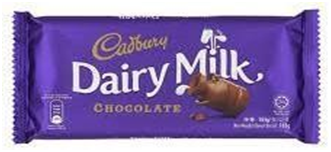
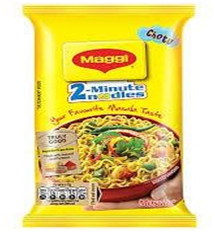
Shape: The shape of a product has been seen for consumer products only. For a shape to qualify as a trade dress, it must be graphically representable, capable of distinguishing between entities' goods or services, non-functional, and not conferring substantial value to the goods.
The aesthetic features of a product's shape play a crucial role in capturing consumer attention and enabling swift product recognition. Shapes with distinctive features are eligible for protection, particularly serving as a primary identifier for visually impaired consumers.
Enterprises like Toblerone and Coca-Cola actively seek registration for their product shapes and packaging to safeguard against unauthorized replication. The legal framework acknowledges the paramount importance of visual elements in trade dress, emphasizing the need to preserve unique shapes that contribute significantly to a product's distinct identity.
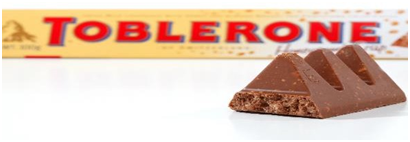

Case Laws Based on Trade Dress in the Food Industry in India
For the majority of food brands, trade dress has become indispensable because all creative expression is legally protected by trademark laws under intellectual property rights.
The Delhi High Court and the Bombay High Court both issued orders and judgments in 2017 that expanded on previous cases that defined common law as it related to trade dress protection. In one of the cases heard by the Delhi High Court's Division Bench, the plaintiffs contested that Britannia had imitated a similar colour trade dress for their product, Nutri Choice Digestive Zero Biscuits, and claimed rights in the yellow and blue packaging of Sunfeast Farmlite Digestive All Good Biscuits. When the single judge ruled in favour of the ITC, it was noted that the product's sales demonstrated how popular it had become in a short amount of time, even though similarity exists in this case. It is a theoretical argument, the defendants continued, since not all "copying" is illegal.
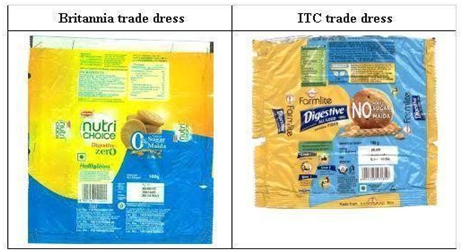
Furthermore, prominent trade dress conflicts that often pit large corporations against one another include the Britannia v. ITC case concerning digestive biscuit packaging and the Emami v. HULL battle over brand name rights. It could be a fight to the death, though, if the defendant is a much smaller business.
Capital Foods filed an allegation against defendant Radiant Indus Chem in a trademark infringement case related to 'Schezwan Chutney.'. The Delhi High Court's division bench, in its order, observed that "the stylization, colour combination, get-up, trade dress, and copyrights in its advertising material have been blindly copied from the appellant (Capital Foods). In 2017, Capital Foods' 'Ching's Secret' secured a trademark certificate for 'Schezwan Chutney.'. Upon discovering that Radiant Indus Chem's "Mrs Food Rite' brand had been using its trademarked title and design to promote its products, Capital Foods initiated a trademark infringement case at the Delhi High Court. Unique to Ching’s Secret, the inclusion of 'chutney' in its nomenclature embodies the 'Desi Chinese' element, which it claims to have developed in the Indian market through years of promotion to Indian citizens. These details shed light on the trademark infringement case and similar legal battles that the brand has faced in the past.
BANG and REIGN Energy Drinks (Vital Pharmaceuticals, Inc. v. Monster Energy Company, 472 F. Supp. 3d 1237 (S.D. Fla. 2020)) – When Monster Energy Drinks debuted a product called REIGN, the makers of an energy drink called BANG filed a lawsuit, in which they alleged that Monster infringed on their trade dress because of the resemblance in the packaging of the two products. In a 2020 decision, the court ruled that the BANG packaging was not inherently peculiar.
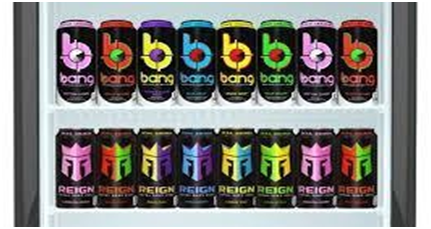
Parle Products Pvt. Ltd. filed a civil suit against Future Group Ltd., claiming that the latter's products had identical or misleadingly similar packaging to Parle's products, along with a cause of action for passing off an identical packaging infringement. By granting an ad-interim injunction order, the Bombay High Court in this case prevented Future Consumer Ltd. (the defendant) from violating Parle's trademark about the packaging of its goods. The Court divulged: "It is undeniable that competing labels are being applied to nearly identical products with identical trade dresses. It cannot be a coincidence that the competing labels and packaging are identical."
Relevance of Trade Dress in the Food Business
Trade dress has grown in importance as a component of business intellectual property and their brand due to the growing impact of marketing and increasing demand for aesthetically pleasing products.
Despite the absence of a specific provision in Indian trade dress law case laws indicate that Indian courts have widely adopted this concept. Although trade dress law is relatively new in the country, the Ferrero Rocher case establishes trade dress protection for similar reasons to those that make trade dress and brand names distinct and unique over time. It also draws attention to the increasing significance of the courts in identifying a trademark or brand name that has developed distinction and originality over a period.
The packaging and trade clothes of "CrackO," "Kracker King," and their products are reproductions of packaging used concerning their "Monaco," "Krack Jack," and "Hide & Seek" products or reproductions of substantial parts thereof when designing the input Parallelism in the rival packaging can never be a matter of coincidence.
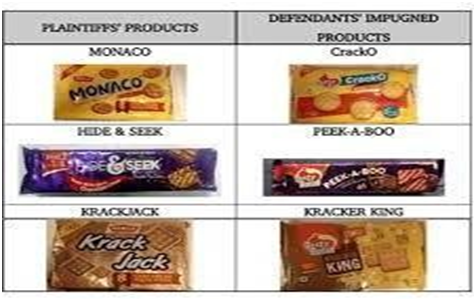
Conclusion
One of the most prominent sectors of the global economy is the food industry. Market
demands, market reaction, and the expense of transforming IP into a business endeavour all have a significant impact on IP and the rights that go along with it.
In other words, IPR management is significantly influenced by trade and commerce factors. Different techniques for managing, organizing, and developing strategies are necessary for different kinds of intellectual property. Experts from a variety of disciplines, including science, engineering, medicine, law, finance, marketing, and economics, must also be involved. Each industry should create its own IP policy, management style, tactics, etc., based on its area of competence.
Many businesses are still strong in this vast market because of their unique products, flavours, imaginative packaging, and advertising. Manufacturing products are getting cheaper and closer to having zero marginal costs. Consumers prefer novel and distinctive products.
Featuring unique designs and labelling. Brands can more successfully reach their target audience by using packaging to convey a statement about the kind of food they are selling. The messaging you choose to use when selling vegan or organic products is very important and might make or ruin your business.
Food enterprises must adhere to the existing IPR legal framework because of the substantial changes in food production, consumption, and preservation. There is a revolution taking on in the food industry. According to future projections, the food sector will integrate a range of culinary trends with rising customer awareness and engagement in the shift to environmentally responsible, consumer-friendly, and sustainable packaging manufacturing.
By: Vibhum Krishan Tripathi and Mehak Chopra
Join LAWyersClubIndia's network for daily News Updates, Judgment Summaries, Articles, Forum Threads, Online Law Courses, and MUCH MORE!!"
Tags :others










